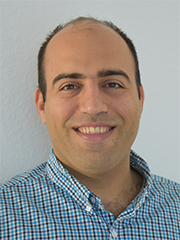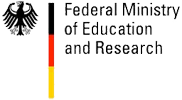| Foto | First Name | Last Name | Position |
|---|---|---|---|
 |
Mykhaylo | Andriluka | People Detection and Tracking |
 |
Roland | Angst | Vision, Geometry, and Computational Perception |
 |
Tamay | Aykut | |
 |
Vahid | Babaei | |
 |
Pierpaolo | Baccichet | Distributed Media Systems |
 |
Volker | Blanz | Learning-Based Modeling of Objects |
 |
Volker | Blanz | Learning-Based Modeling of Objects |
 |
Martin | Bokeloh | Inverse Procedural Modeling |
 |
Adrian | Butscher | Geometry Processing and Discrete Differential Geometry |
 |
Renjie | Chen | Images and Geometry |
Researcher
 |
Dr. Michael Zollhöfer |
Visual Computing, Deep Learning and Optimization
| Name of Research Group: | Visual Computing, Deep Learning and Optimization |
| Homepage Research Group: | web.stanford.edu/~zollhoef |
| Personal Homepage: | zollhoefer.com |
| Mentor Saarbrücken: | Hans-Peter Seidel |
| Mentor Stanford: | Pat Hanrahan |
| Research Mission: | The primary focus of my research is to teach computers to reconstruct and analyze our world at frame rate based on visual input. The extracted knowledge is the foundation for a broad range of applications not only in visual effects, computer animation, autonomous driving and man-machine interaction, but is also essential in other related fields such as medicine and biomechanics. Especially, with the increasing popularity of virtual, augmented and mixed reality, there comes a rising demand for real-time low latency solutions to the underlying core problems. My research tackles these challenges based on novel mathematical models and algorithms that enable computers to first reconstruct and subsequently analyze our world. The main focus is on fast and robust algorithms that approach the underlying reconstruction and machine learning problems for static as well as dynamic scenes. To this end, I develop key technology to invert the image formation models of computer graphics based on data-parallel optimization and state-of-the-art deep learning techniques. The extraction of 3D and 4D information from visual data is highly challenging and under-constraint, since image formation convolves multiple physical dimensions into flat color measurements. 3D and 4D reconstruction at real-time rates poses additional challenges, since it involves the solution of unique challenges at the intersection of multiple important research fields, namely computer graphics, computer vision, machine learning, optimization, and high-performance computing. However, a solution to these problems provides strong cues for the extraction of higher-order semantic knowledge. It is incredibly important to solve the underlying core problems, since this will have high impact in multiple important research fields and provide key technological insights that have the potential to transform the visual computing industry. In summer 2019 Michael Zollhöfer joined Facebook. |
Researcher
- Name of Researcher
- Stefan Funke
- Homepage of Research Group
- First Name
- Stefan
- Last Name
- Funke
- Foto

- url_foto
- Homepage
- Phone
- Position
- Geometry-Guided Design and Analysis of Wireless Sensor Networks
- Mentor in Saarbruecken
- Mentor in Stanford
- Categories
- Former Groups
- Research Mission
- Mobile applications, such as cellular phone service, digital imaging, and portable computing are driving the need for high-bandwidth wireless communication networks. Wireless communication introduces new (spatial) constraints on the design and operation of communication networks. For example, the power required to transmit information via radio waves is heavily dependent on the Euclidean distance between the sender and the receiver(s). Important challenges range from very basic tasks, involved in building the infrastructure between the network nodes, to high level tasks, involved in routing signals. An example of a low-level task is the assignment of frequencies or time slots such that no interference between nearby stations occurs. An example of a high level task is routing messages from node A to node B using at most k intermediate stations and minimizing the amount of energy required to transmit messages. Since wireless nodes in a network are typically battery-powered devices, the efficient power management of these units becomes a major issue when designing network topologies and protocols. We are exploring a new approach to wireless networking by combining computational geometry with algorithm theory to develop new and interesting protocols and network designs. For example, we recently created a new datastructure that, for a given wireless network topology, answers k-hop queries for energy-efficient paths in constant time. We plan to extend our approach to other communication networks, such as those involved in broadcasting.
- mission_rtf
- Name of Research Group
Personal Info
- Photo

- Website, Blog or Social Media Link



